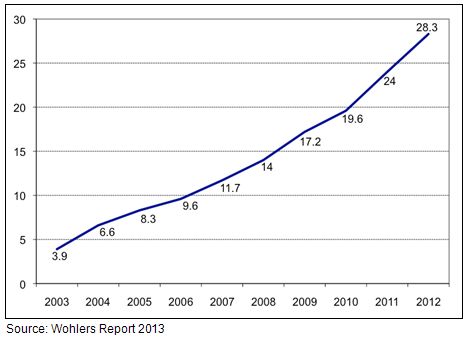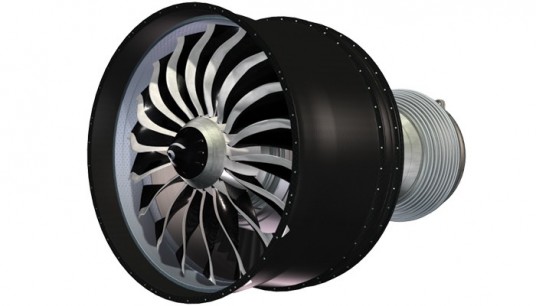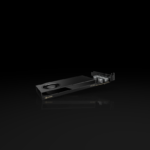Aerospace, jewelry, and medical/dental are among the industries using 3D printing for final parts.
On the eve of the 3D printing industry’s largest conference, a leading analyst firm in the industry says the use of 3D printing for the production of parts for final products is getting close to 30% of all 3D printing.
Following a decade-long growth trend, final part production created by 3D printing processes rose to 28.3% of the $2.2 billion spent last year on 3D printing products and services worldwide. In 2003, it represented only 3.9% of revenues, as shown in the following chart. The data comes from Wohlers Report 2013, published by Wohlers Associates. The report comes just prior to the annual Euromold conference in Frankfurt, Germany, one of the world’s largest manufacturing conferences and the leading venue for new products and services in the 3D printing industry. The 15th annual Wohlers International Conference on 3D Printing is a featured event at this year’s Euromold.

The use of 3D printing—also referred to as additive manufacturing—for final part production is growing in several diverse market segments. Wolhers Associates says the products and industries include metal copings for dental crowns and bridges, orthopedic implants, and jewelry. The aerospace industry is also an important market for the production of 3D-printed parts. Boeing uses additive manufacturing extensively to produce environmental control system ducting for directing the flow of air on military and commercial aircraft. GE Aviation announced that it will use 3D-printed fuel nozzles on its next-generation LEAP engine. The company plans to 3D print about 40,000 nozzles annually for its aircraft engines in the coming years.

Wohlers Associates forecasts the 3D printing industry will continue to post strong double-digit growth over the next several years, hitting $6 billion by 2017 and $10.8 billion by 2021. It took the 3D printing industry 20 years to reach $1 billion in size. In five additional years, the industry generated its second $1 billion. It is expected to double again, to $4 billion, in 2015.
The production of parts for final products is expected to far surpass prototyping applications for 3D-printed parts, says Tim Caffrey, senior consultant at Wohlers Associates. This is because the ratio of prototypes to production parts is often 1:1,000 or greater. “The money is in manufacturing, not prototyping,” said Caffrey. “The opportunity for more commercial production activity from additive manufacturing is immense.”





